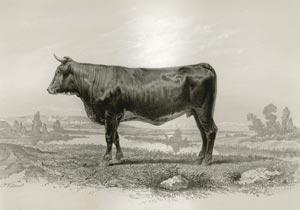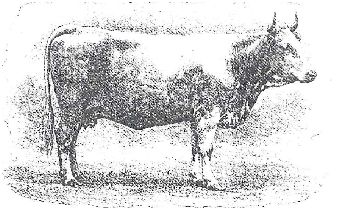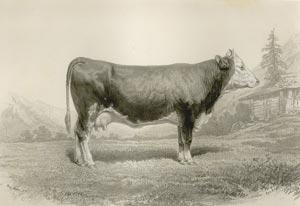The story begins in the XVIIIth century in Franche-Comté, Switzerland’s neighbour region. At that time, the « comtoise » breed cattle is divided in two local types: the Tourache and the Fémeline. In the Jura Mountains, the Tourache with its red coat was used for milk but also as draft animals appreciated for forest work and wood transport. The Fémeline, more present in the plains and low valleys, was wheat-colored and its stature was thinner. This defiant cow was also a bigger milk provider. However at the time the livestock was not really standard and often mixed-race. Distinguishing the two populations was difficult.
Around 1708, Anabaptist Mennonites, persecuted in the Bern country, found asylum in the Montbeliard principality. Those farmers families with famous expertise brought with them part of their livestock, which came from an already old selection of the Bern breed and was more homogeneous, heavier and more productive than average. The Mennonites prompted a certain reaction in the countryside. The local farmers took advantage of their example and their bulls for natural service on their cows. The Mennonite animals’ qualities would soon spread in the local livestock, as far as the Haut-Doubs plateaus, formerly called « Franche-Montagne ».



the Tourache the Fémeline the Bern breed